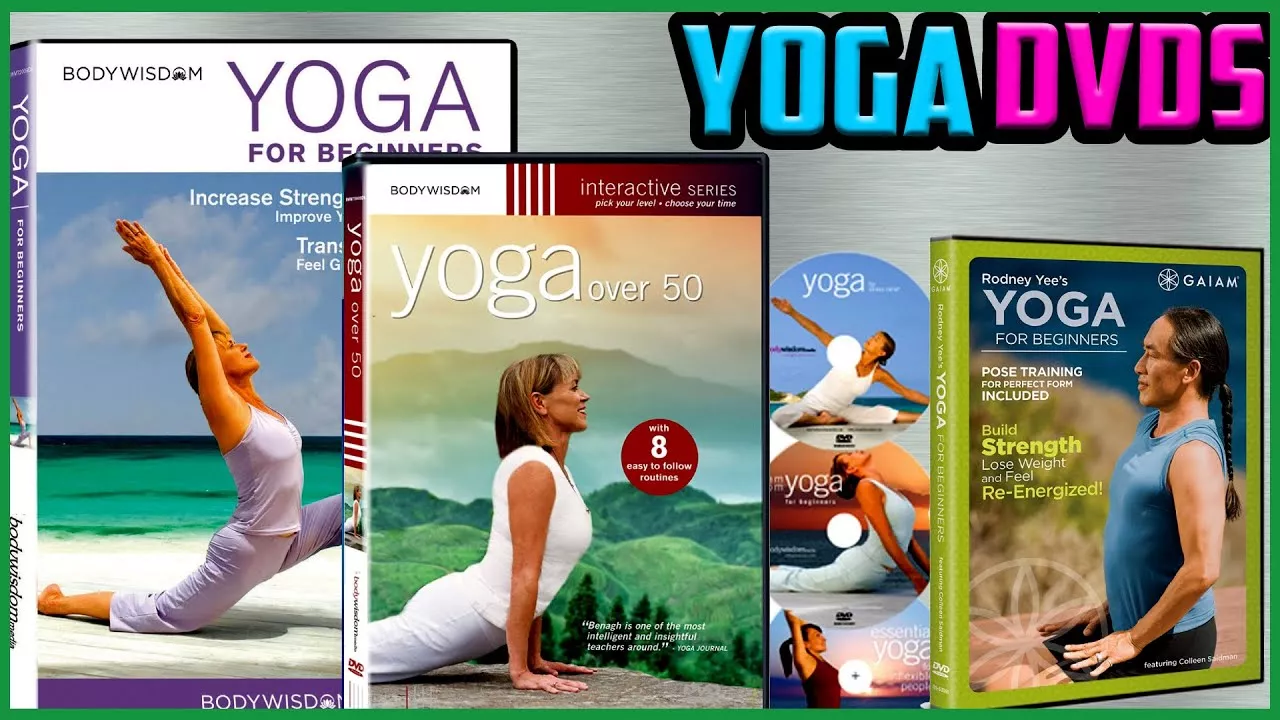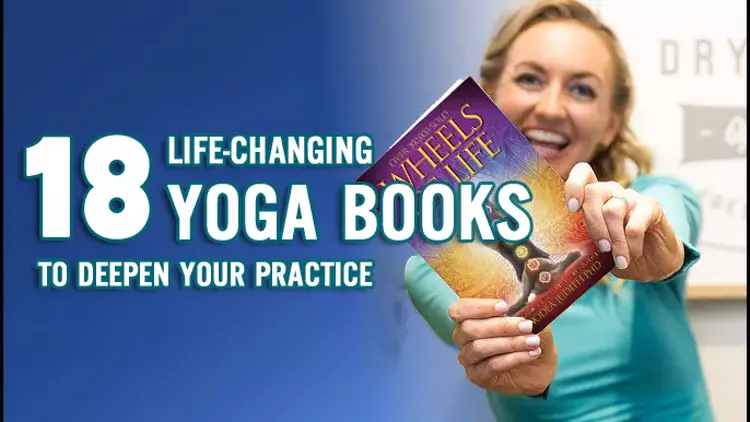For anyone starting their yoga journey, books can be an invaluable resource. They provide foundational knowledge about yoga philosophy, postures (asanas), breathing techniques (pranayama), and the mental and spiritual aspects of the practice.

Below is a detailed guide to some of the best yoga books for beginners, including their specific advantages and disadvantages:
Benefits of Using a Yoga Book
Yoga books offer a wealth of knowledge and serve as invaluable companions for anyone beginning their yoga journey.
Unlike digital resources or in-person classes, books provide a timeless and in-depth exploration of yoga that readers can revisit at their own pace.
Here’s a detailed breakdown of the benefits of using a yoga book:
1. Comprehensive Knowledge at Your Fingertips
- Explanation of Yoga Philosophy: Books often delve into the deeper philosophical aspects of yoga, such as its history, principles, and spiritual teachings, which may not be covered in a typical yoga class.
- Detailed Instructions: Yoga books provide step-by-step guidance for performing asanas (poses), breathing techniques (pranayama), and meditation practices.
- Self-Paced Learning: Readers can go back to sections they find challenging or particularly interesting, allowing them to learn at their own speed.
2. Accessibility and Convenience
- Anytime, Anywhere Learning: A yoga book can be accessed at any time, without needing internet connectivity or attending a scheduled class.
- Portable Resource: Books are easy to carry, making them a great option for travel or quick references during personal practice.
3. Cost-Effective Alternative
- One-Time Investment: Unlike ongoing class fees or subscriptions to yoga apps, a yoga book is a one-time purchase that can be used indefinitely.
- Variety of Choices: Beginners can choose from a wide range of books tailored to different styles, levels, and aspects of yoga, ensuring they find one that suits their needs and budget.
4. Visual Guidance
- Illustrations and Photos: Most yoga books include detailed illustrations or photographs of poses, making it easier to understand and replicate the correct alignment and posture.
- Anatomical Insights: Some advanced books provide insights into how poses affect muscles, joints, and internal organs, enhancing understanding of the practice’s benefits.
5. Encourages Mindfulness and Self-Reflection
- Promotes Independence: Using a book encourages a more introspective practice, as it requires the reader to focus on their body and mind without external prompts.
- Builds a Personal Connection with Yoga: Reading and practicing from a book can help deepen one’s understanding of yoga as a personal journey, rather than just a physical exercise.
6. Supplemental Learning
- Enhances Studio Practice: Books can complement in-person classes, helping readers refine techniques or explore areas of interest in more detail.
- Addresses Specific Needs: Many books focus on particular areas like prenatal yoga, yoga for stress relief, or therapeutic yoga, offering tailored solutions for individual needs.
7. Long-Term Reference
- Timeless Wisdom: Unlike online content that may change or become outdated, a well-written yoga book provides enduring knowledge that can be referred to for years.
- Deeper Engagement: Books encourage sustained attention and engagement, helping readers absorb concepts more thoroughly compared to quick online tutorials.
8. Personal Empowerment
- Self-Directed Learning: By relying on a book, practitioners take control of their yoga journey, fostering a sense of accomplishment and self-discipline.
- Customizable Practice: Readers can adapt the practices and sequences outlined in a book to suit their schedule, physical abilities, and personal goals.

Best Yoga Books for Beginners: A Detailed Guide with Pros and Cons
1. “Light on Yoga” by B.K.S. Iyengar
Overview: Known as the “Bible of Yoga,” this classic book provides comprehensive coverage of yoga asanas, pranayama techniques, and the philosophy behind yoga. It includes detailed instructions and illustrations for over 200 poses.

Advantages:
- Extremely thorough, making it suitable for those seeking a deep understanding of yoga.
- Clear step-by-step guidance and illustrations for poses.
- Includes sections on the philosophy of yoga and pranayama, offering a holistic view of yoga.
Disadvantages:
- Some beginners may find the level of detail overwhelming.
- The poses are advanced, and beginners might require modifications or the guidance of an instructor.
2. “The Complete Illustrated Book of Yoga” by Swami Vishnudevananda
Overview: This book introduces readers to Hatha Yoga, covering asanas, pranayama, meditation, and yoga philosophy. It offers numerous photographs demonstrating poses and techniques.

Advantages:
- Comprehensive coverage of yoga practices, including meditation and breathing techniques.
- A good blend of practical and theoretical knowledge.
- Written by a highly respected yogi, ensuring credibility.
Disadvantages:
- The book has an old-fashioned tone, which may not appeal to modern readers.
- Some of the poses and concepts may feel outdated without modifications.
3. “Yoga: The Iyengar Way” by Silva, Mira, and Shyam Mehta
Overview: This book focuses on Iyengar Yoga, emphasizing alignment and precision in poses. It offers clear instructions with detailed photographs for each pose, making it accessible for beginners.

Advantages:
- Excellent for learning correct alignment, which is crucial for preventing injuries.
- Step-by-step instructions make it beginner-friendly.
- Includes modifications for poses, accommodating different levels of flexibility.
Disadvantages:
- Limited focus on yoga philosophy and other aspects of yoga, such as pranayama or meditation.
- More suitable for those specifically interested in Iyengar Yoga.
4. “Inner Engineering: A Yogi’s Guide to Joy” by Sadhguru
Overview: This book blends spiritual wisdom with practical guidance, introducing readers to the transformative aspects of yoga and inner well-being.

Advantages:
- Easy-to-read and engaging, with a focus on the mental and spiritual benefits of yoga.
- Ideal for those seeking a deeper connection between yoga and personal growth.
- Includes practical exercises to incorporate into daily life.
Disadvantages:
- Limited focus on physical yoga poses (asanas).
- Some readers may find the philosophical content too abstract or spiritual.
5. “Richard Hittleman’s Yoga: 28 Day Exercise Plan” by Richard Hittleman
Overview: This book is a step-by-step guide designed to introduce yoga to complete beginners through a structured, four-week plan.

Advantages:
- Gradual progression makes it perfect for beginners who want to ease into yoga.
- Focuses on accessible poses that don’t require prior experience.
- Offers clear instructions, making it suitable for self-guided practice.
Disadvantages:
- Lacks depth in yoga philosophy and advanced practices.
- The approach may feel too simplistic for readers seeking a broader understanding of yoga.
Choosing the Right Book for You
The best yoga book for beginners depends on what you’re looking for:
- If you want detailed instruction on poses and breathing techniques: “Light on Yoga” or “The Complete Illustrated Book of Yoga.”
- If you’re interested in alignment and precision: “Yoga: The Iyengar Way.”
- If you seek mental and spiritual growth: “Inner Engineering.”
- If you prefer a gradual, structured introduction: “Richard Hittleman’s Yoga: 28 Day Exercise Plan.”
By exploring these books, beginners can gain a solid foundation in yoga, tailored to their personal goals and interests.
Always remember to complement reading with practice, preferably under the guidance of a trained instructor.
Why Beginners Should Start with a Yoga Book

For individuals new to yoga, starting with a book can provide a structured and accessible introduction to the practice.
Unlike other resources like classes or videos, yoga books offer a unique blend of flexibility, depth, and affordability that makes them particularly beneficial for beginners.
Here’s an in-depth look at why starting with a yoga book can be a great choice:
1. Comprehensive Foundation
- Understanding the Basics: Yoga books often provide detailed explanations of foundational poses, breathing techniques (pranayama), and relaxation methods, helping beginners build a strong base.
- Exploration of Yoga Philosophy: Many books delve into yoga’s philosophical and spiritual aspects, including the eight limbs of yoga and its historical roots, giving beginners a holistic understanding beyond physical exercise.
- Tailored to Learning Stages: Books are often categorized by skill level, allowing beginners to start with basic concepts and gradually progress to more advanced practices.
2. Accessibility and Flexibility
- Learn at Your Own Pace: Unlike classes or videos, books allow readers to control the pace of their learning. They can spend more time on challenging sections or revisit key concepts without feeling rushed.
- Convenient and Portable: A yoga book can be carried anywhere, making it easy to practice at home, in the park, or while traveling. This flexibility is especially helpful for those with irregular schedules.
3. Encourages Independent Practice
- Self-Guided Learning: A yoga book empowers beginners to take charge of their practice, encouraging self-discipline and personal accountability.
- Customizable Routines: Unlike pre-set video sequences, books provide a variety of poses and practices that readers can mix and match to suit their needs and goals.
4. Visual and Written Clarity
- Detailed Illustrations and Instructions: Most yoga books include step-by-step instructions paired with photographs or illustrations, making it easier for beginners to visualize and replicate the poses correctly.
- Enhanced Focus on Alignment: Books often emphasize the importance of proper posture and alignment, which is crucial for preventing injuries.
5. Affordable and Long-Term Investment
- Cost-Effective Learning: For the price of a single yoga book, beginners can access a wealth of knowledge that they can use repeatedly. This is far more economical than ongoing class fees or app subscriptions.
- Timeless Resource: A well-written yoga book doesn’t become outdated, making it a long-term companion that beginners can revisit as they progress in their practice.
6. Confidence Building
- Eliminates Performance Pressure: Practicing with a book at home removes the anxiety of keeping up with others in a class, allowing beginners to focus solely on their own progress.
- Step-by-Step Progression: Books often guide readers through gradual stages, ensuring they feel confident before moving to more advanced poses or practices.
7. Holistic Learning Experience
- Integration of Mind, Body, and Spirit: Unlike videos that may focus solely on physical aspects, books often include mindfulness techniques, meditation exercises, and spiritual teachings, encouraging a balanced approach to yoga.
- In-Depth Knowledge: Beginners can gain a deeper understanding of how yoga benefits the body and mind, fostering a greater connection to the practice.
8. Supplemental Learning for Classes
- Preparation for Group Classes: A yoga book can help beginners familiarize themselves with poses and terminology before joining a class, reducing feelings of intimidation.
- Support Between Sessions: For those already attending classes, a book serves as an excellent resource to practice and refine techniques at home.
Why Yoga Books Are Ideal for Beginners
Yoga books provide a low-pressure, cost-effective way to explore yoga while offering the flexibility to learn at an individual pace.
By offering a comprehensive view of yoga’s physical, mental, and spiritual aspects, they empower beginners to develop a well-rounded practice that can grow with them over time.
Whether used as a primary resource or a supplement to classes, yoga books are an invaluable tool for anyone starting their yoga journey.



